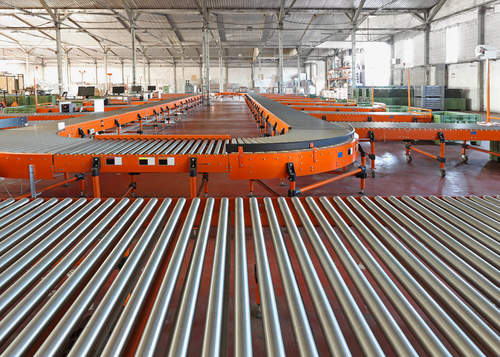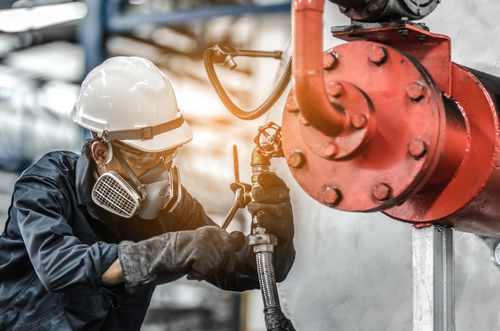A misaligned conveyor belt can cause many conveyor belt problems and back up production, significantly impacting your bottom line and even costing a lot in repairs if allowed to worsen. To avoid conveyor belt failures such as product spillage or even a system breakdown, it’s important to keep your conveyor belt well-maintained and watch for signs of alignment issues.
Here is your guide to conveyor belt troubleshooting so you know when alignment is the problem, how to fix it, and when it’s time to get professional mechanical support.
Why is Conveyor Belt Alignment Important?
A conveyor belt needs to be aligned on the track to move smoothly and efficiently along the conveyor system. If a conveyor belt continues to run while misaligned, this can stretch the belt unevenly, resulting in mistracking and the belt slipping.
It’s important to ensure your conveyor belt is always properly aligned so it can perform its job well and keep your product moving efficiently throughout the facility.
Conveyor Belt Alignment Troubleshooting: 4 Questions to Ask
Machine troubleshooting all comes down to asking the right questions. As you inspect your equipment to find the root cause of a problem, you need to know exactly what symptoms you’re looking for to make an adequate diagnosis. Here are four questions to ask when inspecting your conveyor belt to uncover the source of alignment issues:
1. Is there any visible debris or build-up?
One of the most obvious causes of conveyor belt misalignment is the buildup of debris on or underneath the belt. If debris is allowed to collect between the belt and the pulleys, this can shift the parts out of place and cause visible misalignment around the clogged region.
Small amounts of buildup can often be carefully cleaned to solve the issue, but if a belt has become stretched or warped, then proper alignment may not be possible anymore. If your belt has had buildup for any length of time, it should be inspected and maintained by a professional to reduce the risk of further failures.
2. Is the conveyor frame level and square?
If you’ve inspected your conveyor belt and found no obvious signs of buildup, you should next take a look at the conveyor frame. The frame—or “bed”—should be perfectly level to reduce the risk of misalignment. Conveyor frames can become unlevel if the system has been moved or adjusted to adapt to different needs in your production processes. You can check the frame and ensure it’s nice and level using a standard level.
You should also check to ensure the conveyor frame is square by measuring from one corner of the frame to the opposite corner and then doing the same for the other opposing corners. If these measurements differ, your conveyor frame is not square and should be serviced by a professional.
3. Are the pulleys aligned?
The frame is not the only part of a conveyor system that can get shifted out of place, causing belt misalignment. The pulleys that move the belt along the track need to be square, but they can easily get moved out of place if the wrong pulleys are used to adjust belt tension.
When making adjustments to your pulleys, avoid doing so with the drive pulleys. Adjustments should only be made with snub rollers and idlers. The drive roller, typically located at the head of the conveyor belt system, is usually powered to move the belt forward. Snub rollers and idlers exist to guide the belt along its path without adding additional power, making them a safer option for adjusting belt tension.
4. Is the belt cut properly?
A belt that is cut in the wrong place can easily become misaligned. This issue is often noticeable right from the start, but problems may not occur right away if the poor cutting isn’t enough to affect belt alignment immediately.
Because this is a manufacturing issue with the belt itself, a belt that isn’t cut correctly will need to be replaced. This is why it’s so important to work with a high-quality mechanical contractor from the get-go, guaranteeing you a conveyor belt system you can rely on.
What to Do If Your Conveyor Belt Still Has Trouble
While conveyor belt alignment troubleshooting can be performed by anyone who knows what to look for, the repairs typically will require an expert touch. Small adjustments to pulleys or routine cleaning and maintenance can go a long way toward solving alignment issues, but if a belt has come out of alignment it may already be damaged beyond these quick fixes.
After performing conveyor belt alignment troubleshooting and internally addressing the obvious issues, your conveyor belt may still struggle to stay aligned. If that is the case, the misalignment is likely a symptom of a larger issue with your conveyor belt system that requires professional assessment.
If you are in need of professional help troubleshooting and repairing your conveyor belt system, contact us at Mathews Mechanical today!






